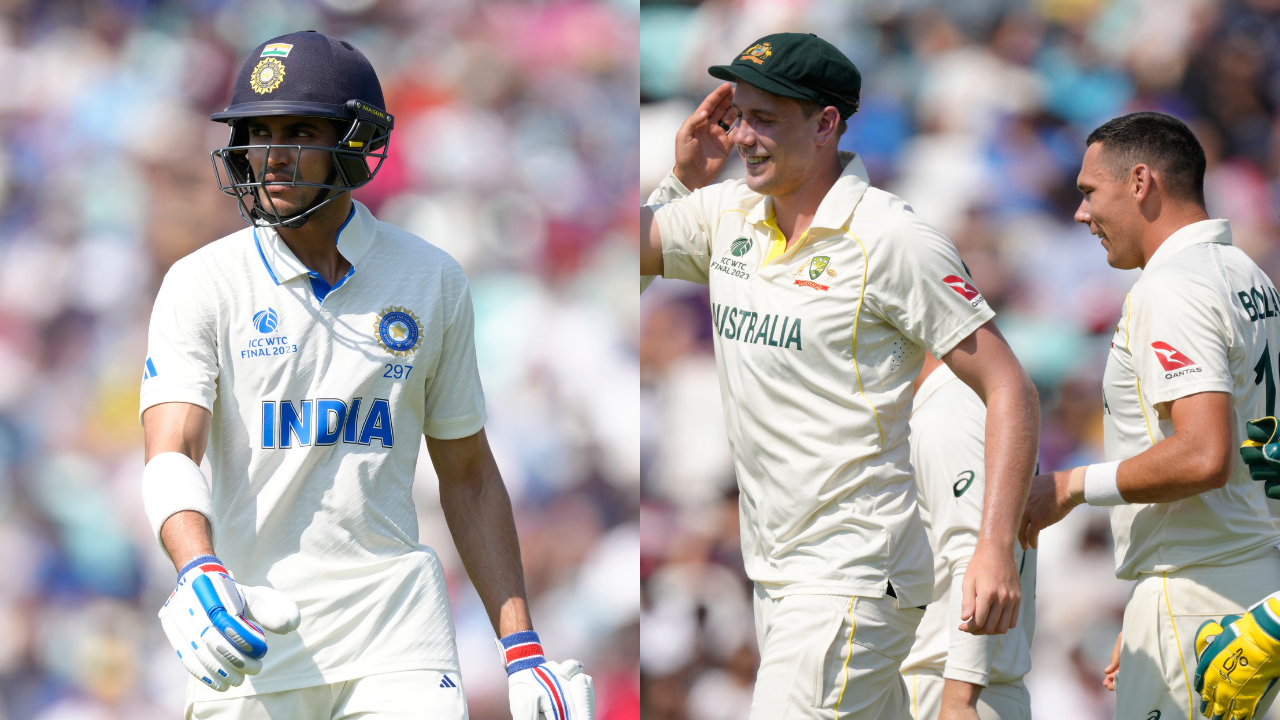Fair Catch Law Explained: Why 3rd Umpire Gave Shubman Gill Out Despite Ball Touching Grass Through Green's Hands
Cameron Green took a much controversial catch to dismiss Shubman Gill as the umpire gave the batsman out despite the ball touching the grass through the fielder's hands on Day 4 of the World Test Championship final. The decision created a huge uproar in the cricket community but let's see what the MCC law of fair catch actually says-

Updated Jun 11, 2023 | 07:23 AM IST

Cameron Green took a much controversial catch to dismiss Shubman Gill as the umpire gave the batsman out
Photo : AP
KEY HIGHLIGHTS
- Indian opener Shubman Gill got out in a controversial manner when Cameron Green caught him in the slips
- The third umpire gave it out despite the ball touching the grass through the fielder's hands
- Here's a look at the MCC law, which explains what is a fair catch and might give a clearer picture as to why the umpire gave it out
Team India's fight with the bat in the second and third sessions on Day 4 of the World Test Championship (WTC) final saw them reduce the target of 444 runs by 164 and has them needing 280 more runs to script history against Australia on the final day of the game at the Oval in London. India lost three wickets in the second innings with Virat Kohli and Ajinkya Rahane staying unbeaten at the stumps on Day 4. Kohli's gritty unbeaten 44 and skipper Rohit Sharma's attacking 43 were key to India still being in the game, however, it was the controversial dismissal of Shubman Gill that stole all the limelight.
Gill and Rohit had given a flying start chasing a monumental target set by the Australian team. It seemed like if they stayed for another 8-10 overs, India would complete 100 in just 15 overs, however, against the run of play, Scott Boland produced a fabulous delivery which saw Shubman Gill have a poke at it. The ball flew towards the gully fielder Green, who dived towards his left to take a magnificent catch, his second screamer of the game. However, when Green completed the dive, his fingers underneath the ball were split and it touched the grass when he was grounded.
When the dive completed, Green had all his three fingers under the ball. Since there was no soft signal, the third umpire had to completely rely on the technology and he gave the decision in the bowling side's favour. The decision did upset both the Indian openers and created a huge furor on social media as many said that since it was inconclusive, it should have been given in batsman's favour.
However, the third umpire Richard Kettleborough followed the rule book as per the laws by MCC (Marylebone Cricket Club) regarding fair catch. The law says that if the hands of the fielder touch the ground with the ball completely in his hand, then the catch will prevail. And if the fingers are underneath the ball and the fielder has control of the ball, the catch will be ruled, irrespective of a part of the ball touching the grass or not. The word 'control' is key and Green had that since he held on to the catch after putting in the dive.
As per MCC Law 33
- 33.2.2.1 - the ball is held in the hand or hands of a fielder, even if the hand holding the ball is touching the ground or is hugged to the body, or lodges in the external protective equipment worn by a fielder, or lodges accidentally in a fielder’s clothing.
- 33.3 Making a catch - The act of making a catch shall start from the time when the ball first comes into contact with a fielder’s person and shall end when a fielder obtains complete control over both the ball and his/her own movement.
The Indian players still believe that the evidence was inconclusive and that it should have been ruled, however, several journalists and experts have called that the right decision was made.
End of Article
Videos





07:41
IMD Briefing On Cyclone Biparjoy | Gujarat & Mumbai On High Alert | Landfall Expected In 24 Hours

04:31
OnePlus 11R, Samsung Galaxy A54, Vivo V27 Pro: Best Smartphones Under Rs 40,000 | Gadget Times

03:50
Realme 11 Pro | Unboxing & First Impression | Gadget Times

05:00
Apple Vision Pro | Here’s everything you need to know | Features, Price, Release Date & More

11:44
Apple's WWDC Event|| Everything You Need To Know | Gadget Times











